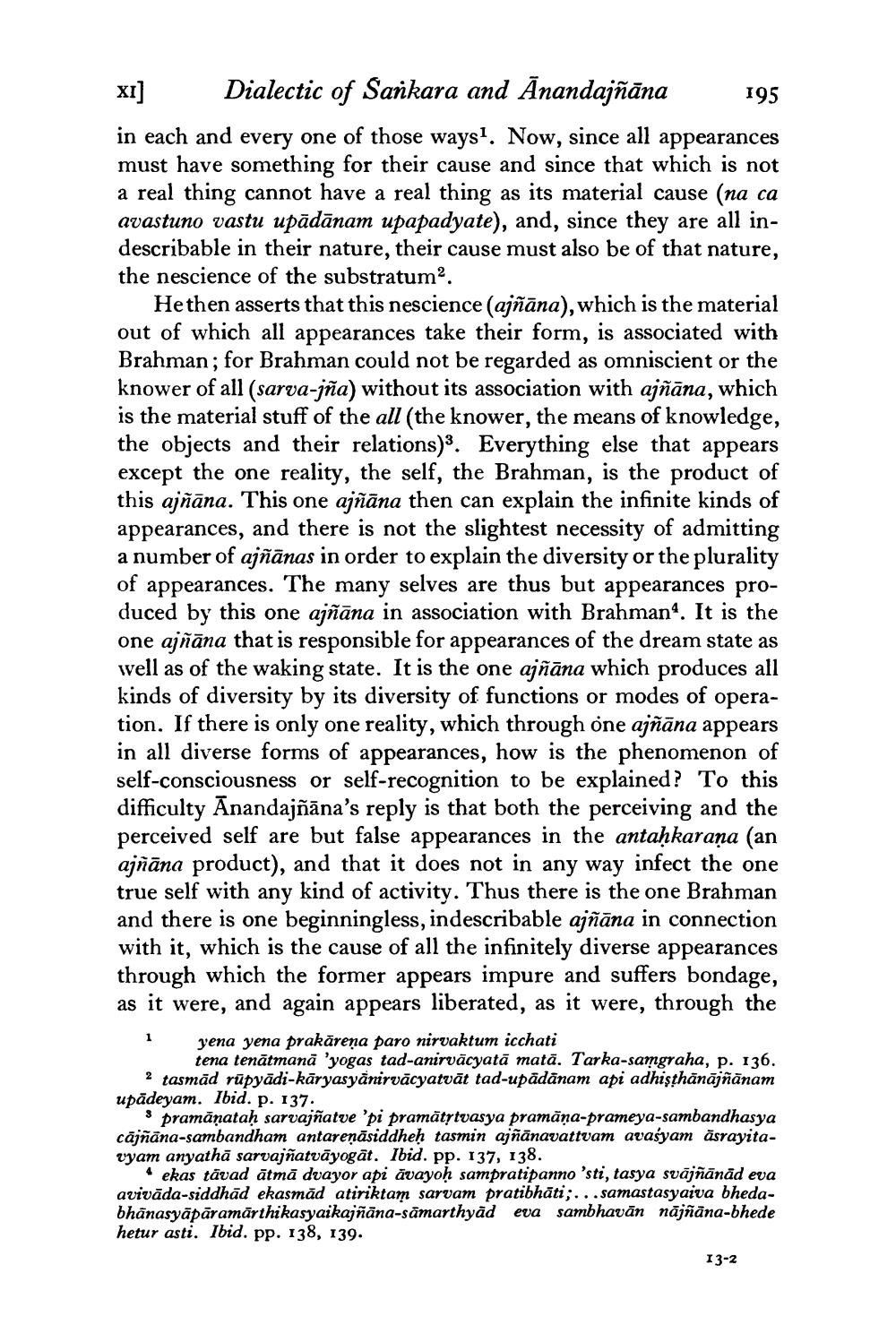________________
XI]
Dialectic of Sankara and Ānandajñāna
in each and every one of those ways1. Now, since all appearances must have something for their cause and since that which is not a real thing cannot have a real thing as its material cause (na ca avastuno vastu upādānam upapadyate), and, since they are all indescribable in their nature, their cause must also be of that nature, the nescience of the substratum2.
He then asserts that this nescience (ajñāna), which is the material out of which all appearances take their form, is associated with Brahman; for Brahman could not be regarded as omniscient or the knower of all (sarva-jña) without its association with ajñāna, which is the material stuff of the all (the knower, the means of knowledge, the objects and their relations)3. Everything else that appears except the one reality, the self, the Brahman, is the product of this ajñāna. This one ajñāna then can explain the infinite kinds of appearances, and there is not the slightest necessity of admitting a number of ajñānas in order to explain the diversity or the plurality of appearances. The many selves are thus but appearances produced by this one ajñāna in association with Brahman1. It is the one ajñāna that is responsible for appearances of the dream state as well as of the waking state. It is the one ajñāna which produces all kinds of diversity by its diversity of functions or modes of operation. If there is only one reality, which through one ajñāna appears in all diverse forms of appearances, how is the phenomenon of self-consciousness or self-recognition to be explained? To this difficulty Anandajñāna's reply is that both the perceiving and the perceived self are but false appearances in the antaḥkaraṇa (an ajñāna product), and that it does not in any way infect the one true self with any kind of activity. Thus there is the one Brahman and there is one beginningless, indescribable ajñāna in connection with it, which is the cause of all the infinitely diverse appearances through which the former appears impure and suffers bondage, as it were, and again appears liberated, as it were, through the
195
1
yena yena prakāreņa paro nirvaktum icchati
tena tenātmanā 'yogas tad-anirvācyatā matā. Tarka-samgraha, p. 136. 2 tasmād rūpyādi-karyasyanirvācyatvāt tad-upādānam api adhiṣṭhānājñānam upadeyam. Ibid. p. 137.
3 pramāṇataḥ sarvajñatve 'pi pramātṛtvasya pramāṇa-prameya-sambandhasya cājñāna-sambandham antareṇāsiddheḥ tasmin ajñānavattvam avaśyam asrayitavyam anyatha sarvajñatvāyogat. Ibid. pp. 137, 138.
ekas tāvad ātmā dvayor api avayoḥ sampratipanno 'sti, tasya svājñānād eva avivada-siddhad ekasmad atiriktam sarvam pratibhāti;...samastasyaiva bhedabhānasyāpāramārthikasyaikajñāna-samarthyād eva sambhavan nājñāna-bhede hetur asti. Ibid. pp. 138, 139.
13-2




